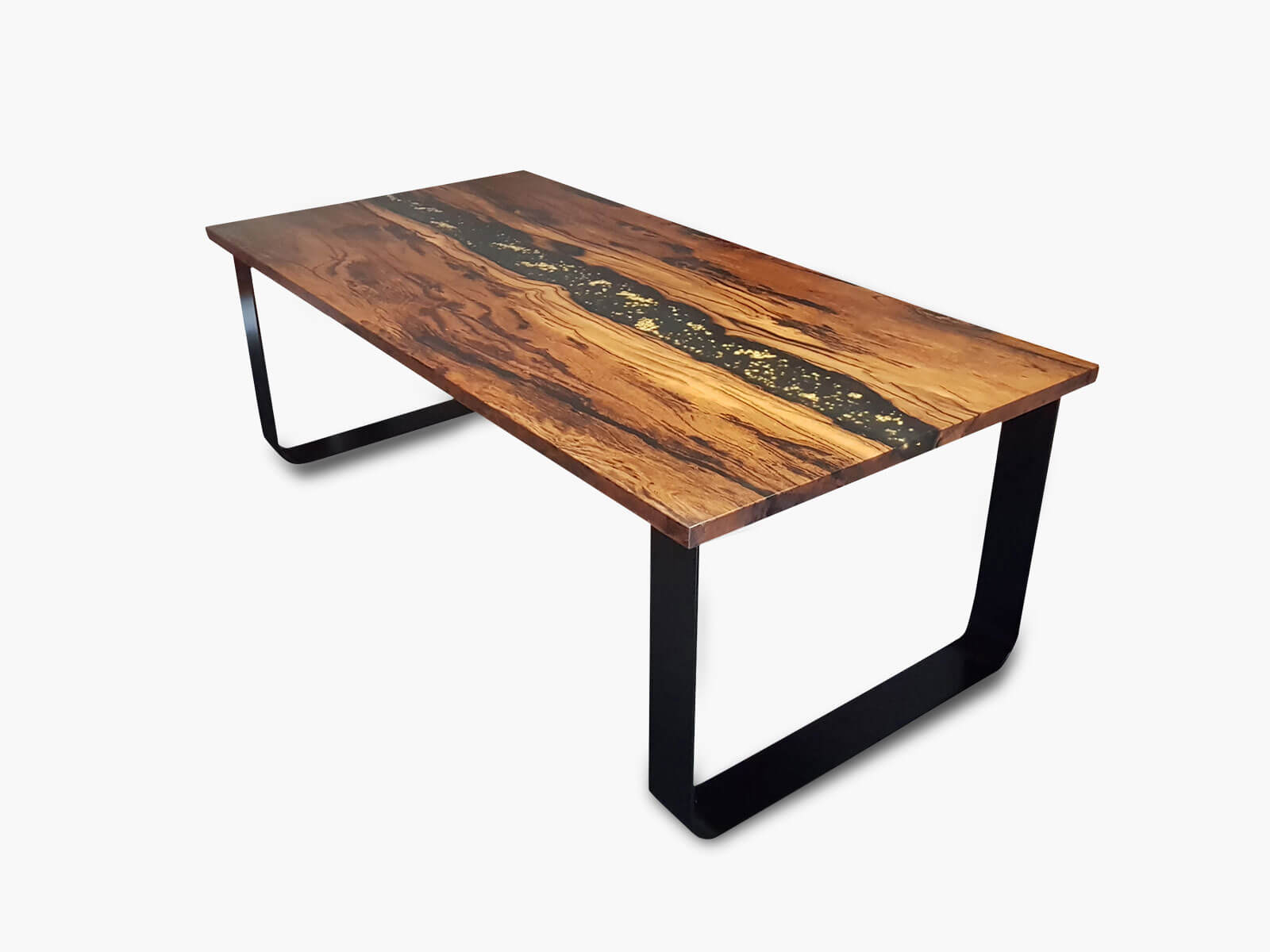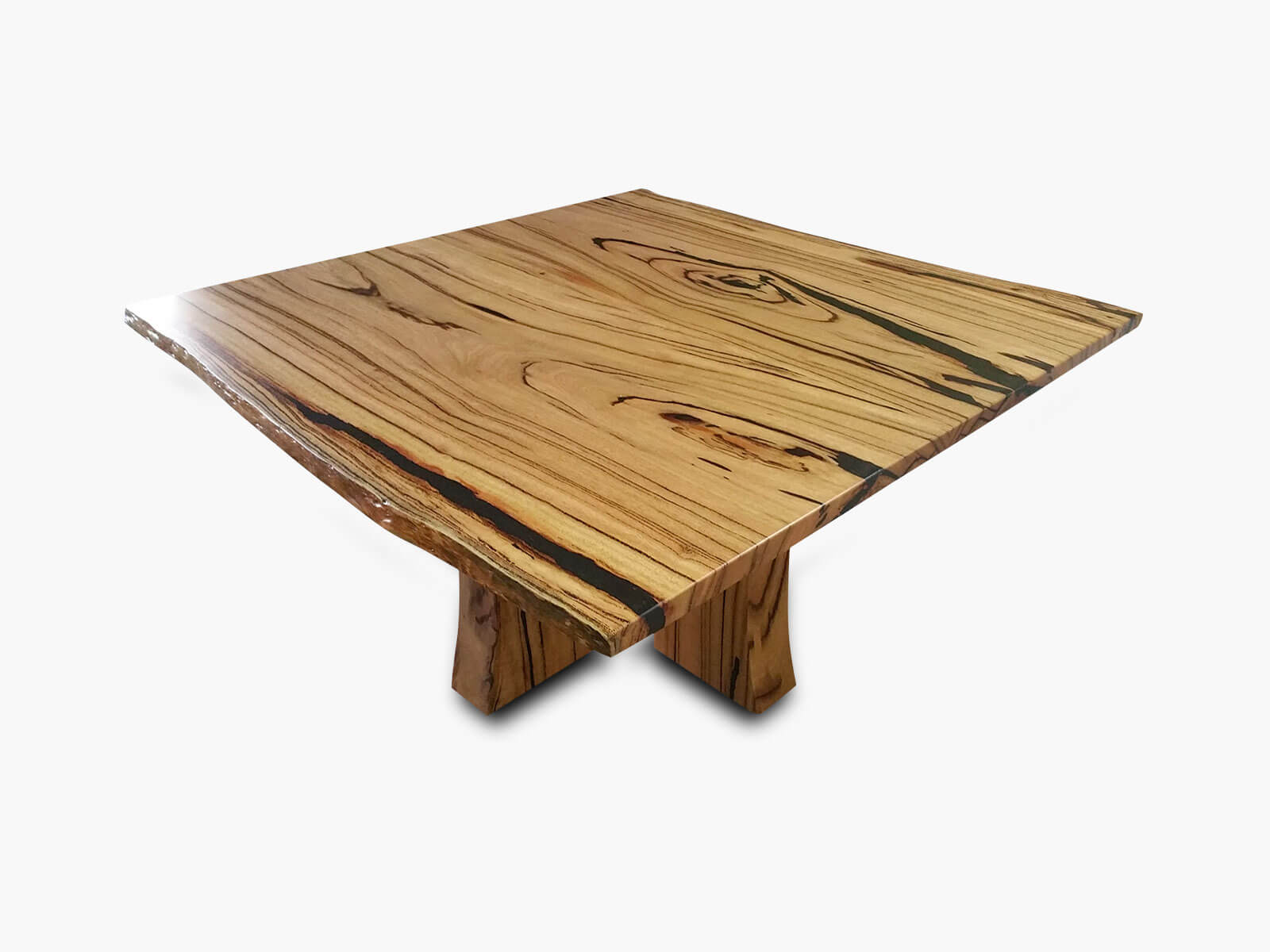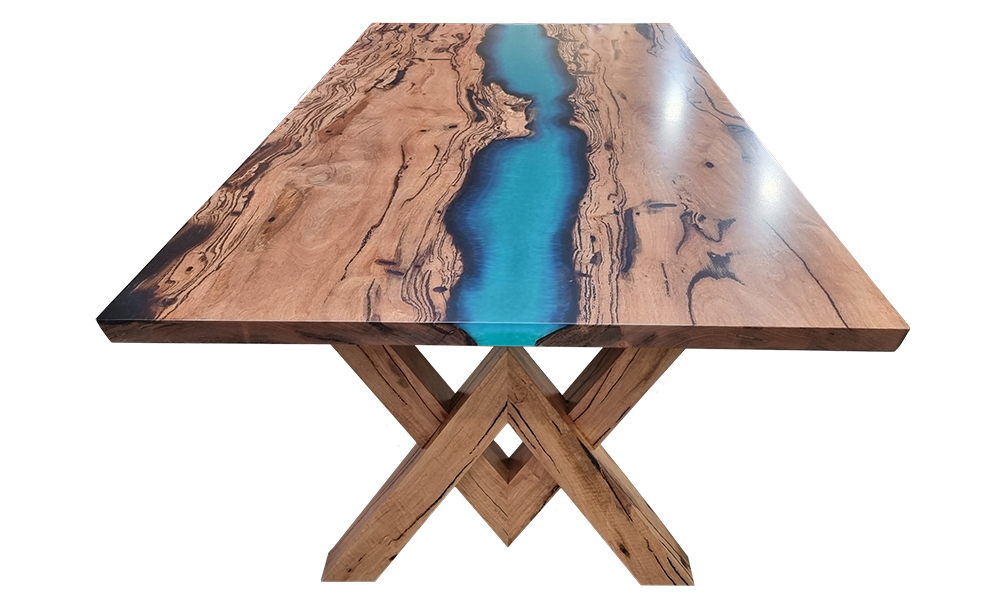The Best Wood Furniture Finish: A Guide to Choosing the Perfect Finish to Maintain Your Timber Furniture
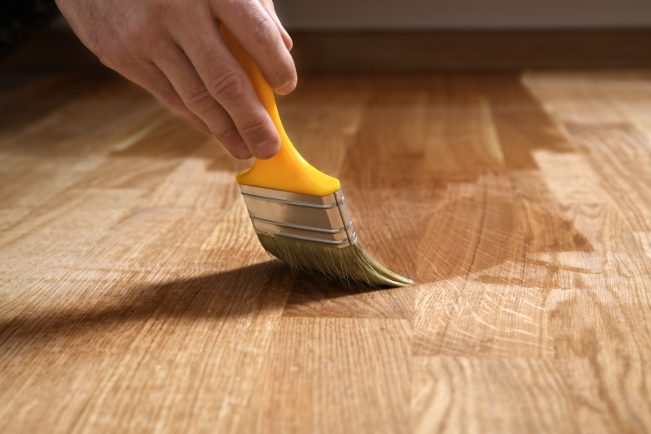
When it comes to enhancing the beauty and longevity of your Australian-made timber furniture, selecting the right wood finish can be the difference between a piece that looks weathered and worn within a few seasons and one that remains stunning and durable for years to come. However, knowing what finishes are best for your furniture can be a bit of a minefield.
With so many options available, each with its own unique benefits and drawbacks, the choice can be daunting. This guide will help you navigate the world of wood finishes and ensure your wooden furniture gets the treatment it deserves!
Introduction to Wood Finishes
Finishing your wood furniture is more than just a final touch; it’s a crucial step that protects the wood from damage and enhances its natural beauty. A good finish can make a significant difference in how your furniture withstands daily use and environmental factors. Let’s explore the different types of wood finishes to help you make an informed decision.
Types of Wood Finishes
Oil-Based Finishes
Danish Oil, Linseed Oil, and Tung Oil are popular oil-based finishes that penetrate the wood and provide a rich, natural look and are loved for their easy application and maintenance. Linseed oil, derived from flax seeds, is a traditional choice that offers a warm, amber hue. Tung oil, which is sourced from the nuts of the tung tree, is highly water-resistant and provides a durable finish that’s perfect for high-use furniture pieces. Here is a breakdown of how they compare:
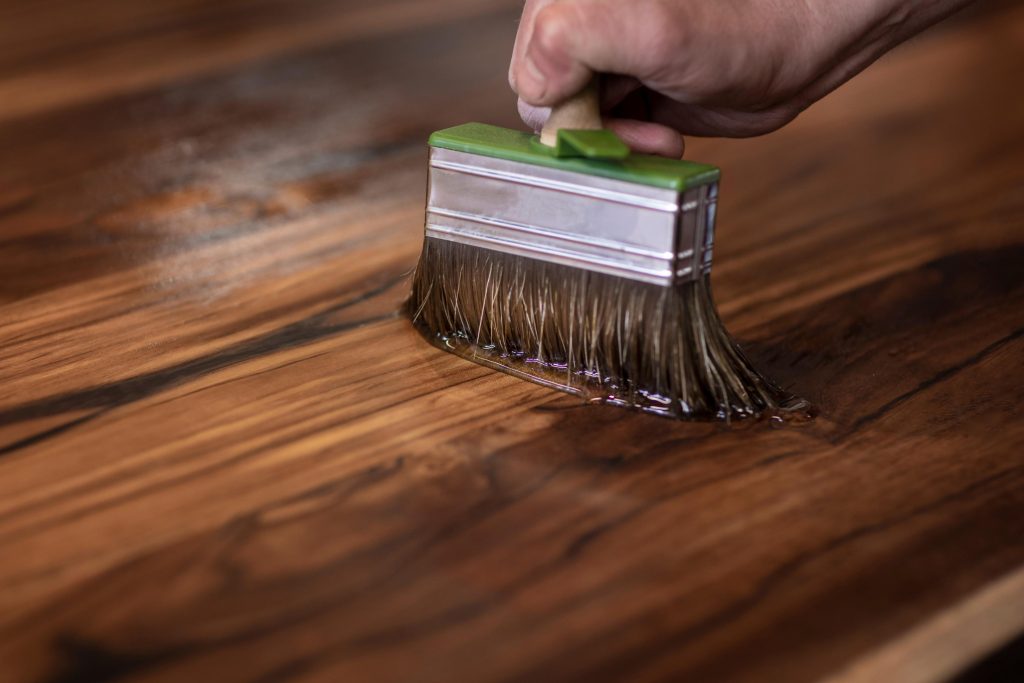
Osmo Oil
At Jarrimber, we use Osmo Oil for finishing our timber furniture. This high-quality oil and wax combination offers superior protection while enhancing the natural grain and beauty of the wood. Osmo Oil penetrates deeply, creating a durable and water-resistant surface that is also more environmentally friendly.
Pros: Provides excellent protection, enhances natural wood grain, eco-friendly, water- and dirt-resistant.
Cons: Slightly more expensive than traditional oils.
Best For: All wood types, especially for furniture that requires high durability.
Furniture Types: Dining tables, coffee tables, and other frequently used pieces.
Application: Apply with a brush or cloth, allowing it to penetrate the wood. Wipe off excess, and apply additional coats as needed, ensuring proper drying time between coats.
Danish Oil
Pros: Easy to apply, enhances wood grain, provides a warm finish.
Cons: Requires reapplication over time, less water-resistant.
Best For: All types of wood, especially those with beautiful grain patterns like oak and walnut.
Furniture Types: Dining tables, chairs, and decorative pieces.
Application: Apply with a clean cloth, let it penetrate for 15-20 minutes, then wipe off excess. Allow it to dry completely before applying additional coats.
Linseed Oil
Pros: Deep penetration, enhances the natural colour of the wood, eco-friendly.
Cons: Long drying time, can yellow over time.
Best For: Dense woods like teak and mahogany.
Furniture Types: Outdoor furniture, antiques, and restoration projects.
Application: Apply with a brush or cloth, allow to soak, and then wipe off excess. Several coats may be needed, with long drying times between each.
Tung Oil
Pros: Highly water-resistant, durable finish, brings out the wood’s natural beauty.
Cons: Longer drying time, more expensive.
Best For: Dense and oily woods such as teak and rosewood.
Furniture Types: Kitchen countertops, dining tables, and high-use furniture.
Application: Apply with a cloth, allow to soak, wipe off excess, and repeat for several coats. Ensure each coat is dried completely before the next application.
Acrylic and Water-Based Finishes
Water-based finishes are gaining popularity because of their eco-friendly properties and easy application process. At Jarrimber, we use acrylic finishes to ensure a long-lasting, resilient surface that maintains the natural beauty of the timber.
These finishes dry quickly and are less likely to yellow over time compared to their oil-based siblings. They are an excellent choice for those looking for a clear finish that maintains the natural colour of the wood.
Pros: Quick drying, less yellowing over time, low odour, easy cleanup with water.
Cons: Less durable than oil-based finishes, can raise the grain of the wood.
Best For: Light-coloured woods like maple and birch.
Furniture Types: Modern furniture, cabinets, and children’s furniture.
Application: Apply with a synthetic brush or sprayer, sand lightly between coats, and apply multiple thin coats for the best result.
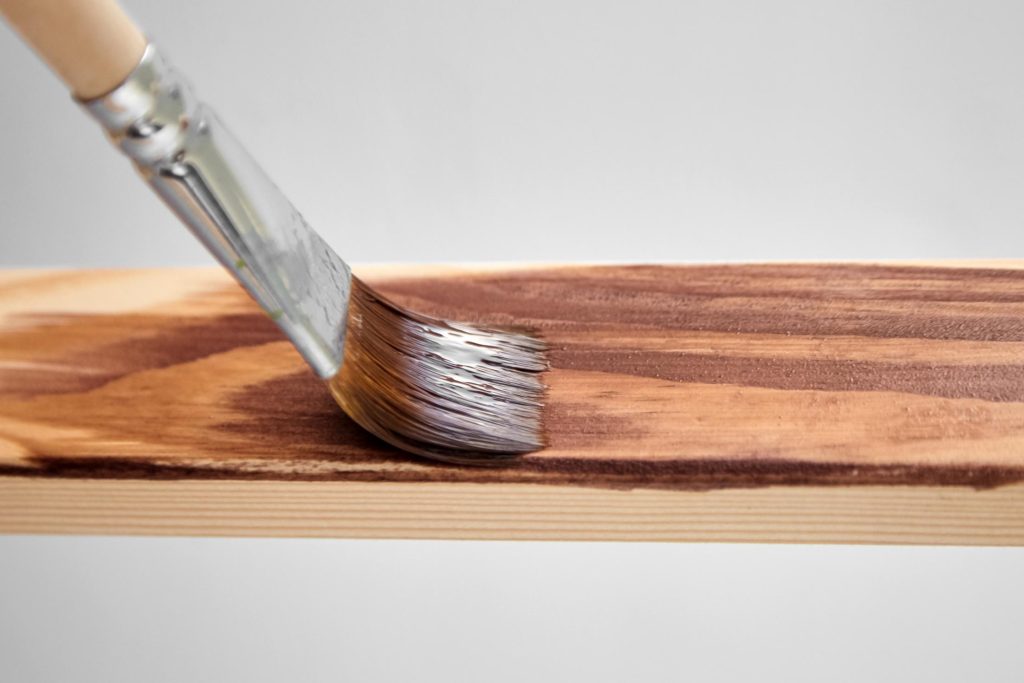
Polyurethane Finishes
Polyurethane finishes, one of the key finishes we use on our pieces here at Jarrimber, are available in both oil-based and water-based formulations. Oil-based polyurethane offers a warm, amber tone and a tough, durable finish. However, it tends to yellow over time. Comparatively, water-based polyurethane provides a clear, non-yellowing finish that is perfect for lighter woods and modern interiors.
Oil-Based Polyurethane
Pros: Extremely durable, heat and chemical-resistant, enhances the wood’s colour.
Cons: Longer drying time, can yellow over time, strong odour.
Best For: All types of wood, particularly dark woods like walnut and cherry.
Furniture Types: Floors, tabletops, and high-traffic areas.
Application: Apply with a natural bristle brush, allow each coat to dry completely, and sand lightly between coats.
Water-Based Polyurethane
Pros: Clear finish, quick drying, low odour, less yellowing.
Cons: Less durable than oil-based, can raise the wood grain.
Best For: Light-coloured woods like pine and ash.
Furniture Types: Cabinets, furniture for humid environments, and light-coloured furniture.
Application: Apply with a synthetic brush or sprayer, sand between coats, and apply multiple thin coats.
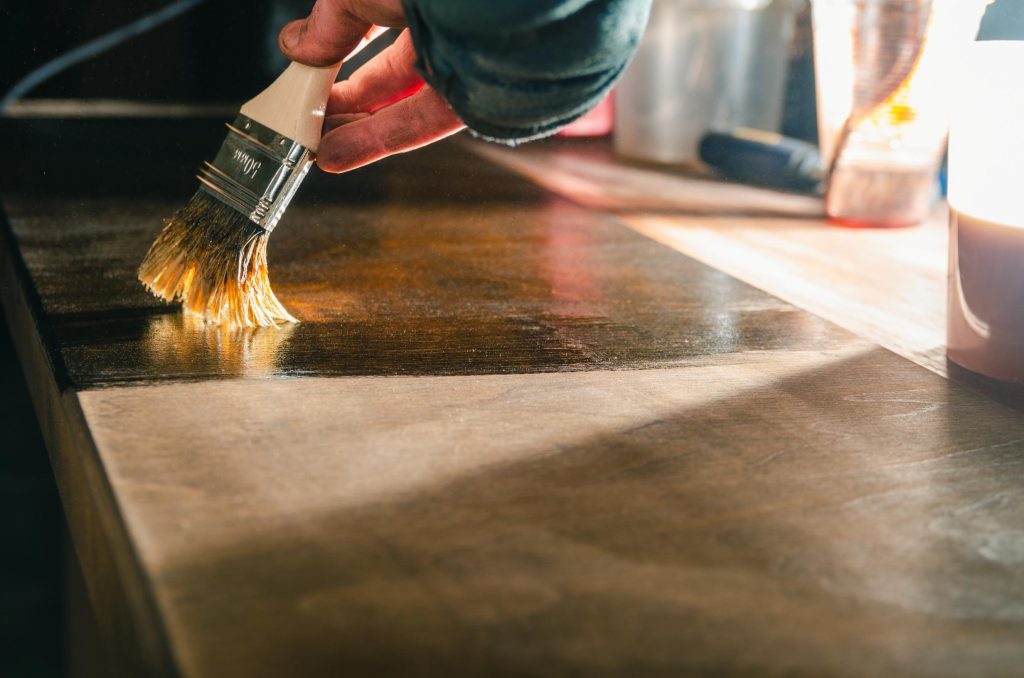
Varnish and Lacquer
Varnish and lacquer finishes are known for their high durability and protective qualities. Varnish creates a hard, protective layer that withstands heat, water, and chemicals. Lacquer dries quickly and offers a smooth, glossy finish, making it a favourite for fine furniture.
Varnish
Pros: Extremely durable, UV-resistant, heat-resistant.
Cons: Longer drying time, can yellow over time, strong odour.
Best For: All types of wood, especially outdoor furniture.
Furniture Types: Outdoor furniture, boat woodwork, and surfaces exposed to sunlight.
Application: Apply with a brush, allow each coat to dry completely, and sand lightly between coats.
Lacquer
Pros: Dries quickly, provides a smooth, glossy finish, easy to repair.
Cons: Strong fumes, less durable than varnish, can crack over time.
Best For: Fine woods like mahogany and cherry.
Furniture Types: High-end furniture, musical instruments, and decorative pieces.
Application: Apply with a sprayer for the best results, allow each coat to dry completely, and sand between coats.
Wax Finishes
Wax finishes, such as beeswax and carnauba wax, are easy to apply and provide a soft, natural sheen. While wax finishes are not as durable as other options, they are excellent for enhancing the wood’s natural beauty and are easy to reapply.
Pros: Easy to apply, enhances wood’s natural beauty, and provides a soft sheen.
Cons: Less durable, requires frequent reapplication, not water-resistant.
Best For: All types of wood, particularly those with a beautiful grain.
Furniture Types: Antique furniture, decorative pieces, and items that won’t see heavy use.
Application: Apply with a soft cloth, let it dry, and then buff to a shine. Reapply as needed for maintenance.
Choosing the Best Finish for Your Project
When selecting a wood finish, consider factors such as the type of wood, the intended use of the furniture, and the desired look. For instance, a dining table that sees heavy use might benefit from the durability of oil-based polyurethane, while a decorative piece might only require a simple wax finish.
Advantages of Water-Based Finishes
Water-based finishes are a fan favourite of the more environmentally conscious. They are easy to apply, quick to dry, and offer a clear finish that won’t yellow over time. These finishes are also water-resistant, making them ideal for pieces that need to withstand moisture.
Durability and Maintenance
The durability of your finish depends on how well it withstands temperature and humidity changes. Oil and varnish finishes are best known for their robustness, while water-based finishes provide adequate protection with less yellowing. Regular maintenance, such as reapplying wax or oil, will keep your furniture looking its best long-term.
Choosing the right wood finish for your Australian-made timber furniture is key to maintaining its beauty and durability. Each of Jarrimber’s locally made timber pieces can be fully customised to your preferences, from the design to the finish. Let us help you choose the perfect option to enhance and protect your furniture. Contact us today to discuss the best finish for your furniture!
Share This

